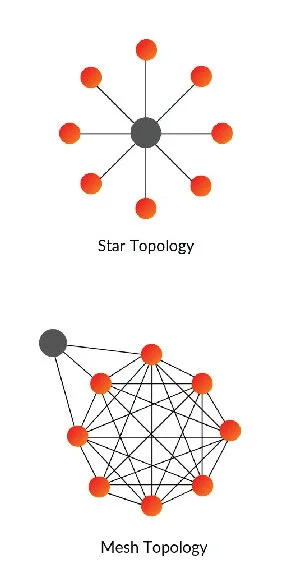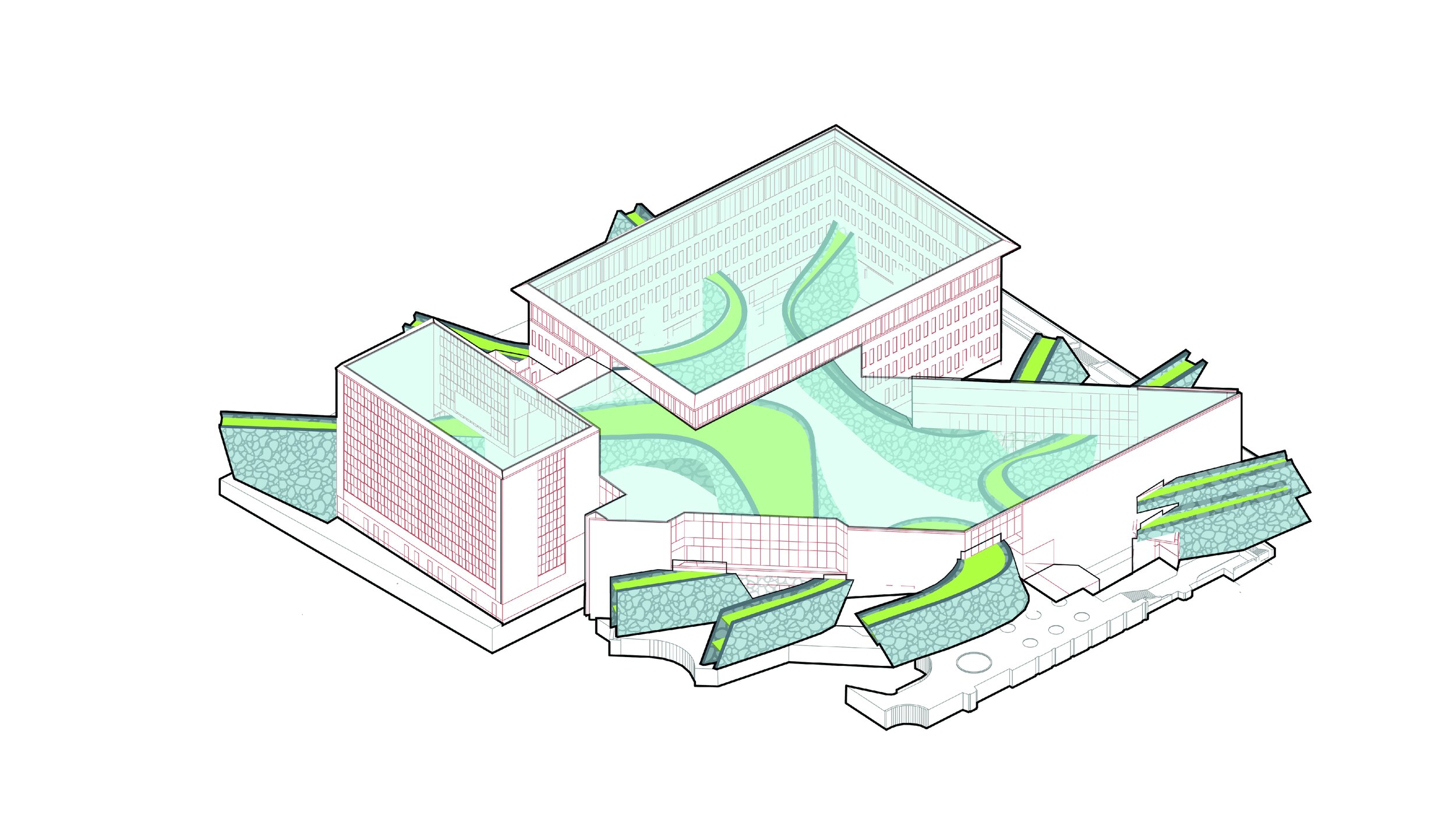SPATIAL MESH
As technology becomes an increasingly omnipresent force in our lives, we must examine how we communicate and disperse information. Today most of our digital communication occurs through a star or tree local network topology in which individual nodes aren’t all interconnected, rather information is sent to a central node and then dispersed accordingly. This centralized network puts tremendous power in the central node to control the flow of information. Essentially whoever controls the central node controls information communication, setting the stage for an Orwellian dystopia.
+NETWORKING
The alternative is the Mesh topology allows for direct connections between each node, and well-designed protocols allow for seamless rerouting of information if a particular node is disabled. Applying the ideas of mesh networking to physical space, specifically exhibition/ research spaces at the University promote the democratic sharing of information and adaptive circulation. Flexible walls and moving platforms allow each exhibition or research space to act as a node that can expand, contract, intersect, or be entirely shut down. This state of constant flux creates a natural rerouting of the circulation paths encouraging people to engage with their environment through dynamic wayfinding.
+AGGREGATION
COLUMN
PLATFORM
WALL
The Columns with the brightly patterned terraces are at the human scale. The platforms are supported by the columns and they can slide up and down the columns and their vertical adjacency to the terraces creates intimate spaces, benches and tables to display research, conduct experiments or whatever else the space may be used for. The Column and Platform system is nested inside the mesh walls. As the walls are adaptive they shift laterally and also peel up exposing alternate points of entry into the nodes. The movement of the mesh walls also create oppurtunites of intersection with the platforms for acess to the mezzanine path in the interstitial space of the mesh wall. There’s an inverse relationship in the complexity of movement and fuction vs. the complexity of form. The terraced columns are stationary but have the most complex shape and color. While the mesh walls are just a grey sweep but have unrestrained movement in all directions.
COLUMN + PLATFORM
NODE
COLUMN + PLATFORM + WALL
MESH NETWORK
+ADAPTIVE CIRCULATION
The mesh walls are the most dynamic and flexible allowing fairly unrestrained movement laterally and vertically. The walls are made of an elastic mesh that can stretch and contract laterally to allow for different programs. The vertical movement creates thresholds allowing people to circulate within the network. Functionally the most complex, the elastic mesh of the walls is grey and the expression of structural complexity is softened by a translucent shroud.

























